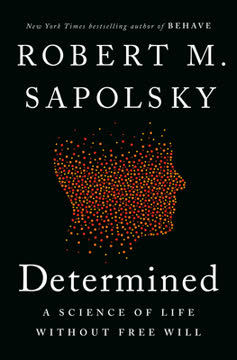つの重要なポイント
1. 呼吸のマインドフルネス:現在の瞬間へのゲートウェイ
「常にマインドフルな状態で、瞑想者は息を吸い、マインドフルな状態で息を吐く。」
呼吸をアンカーとして。 呼吸のマインドフルネスは仏教瞑想の基盤であり、現在の瞬間に常に存在するアンカーとして機能します。呼吸に集中することで、過去の後悔や未来の不安から解放された、現在の経験に対する非判断的な気づきを育むことができます。
実践的な応用。 呼吸のマインドフルネスを実践するには:
- 快適な座位を見つける
- 呼吸の感覚に注意を集中する
- 吸う息と吐く息をコントロールしようとせずに観察する
- 心がさまようときは、優しく呼吸に注意を戻す
- 短いセッション(5-10分)から始め、徐々に時間を延ばす
このシンプルでありながら深遠な実践は、集中力、静けさ、そして心と経験の本質に対する洞察を育むのに役立ちます。
2. マインドフルネスの四つの基礎:身体、感情、心、法
「呼吸が行われていることに疑問の余地はない。呼吸者がどこにも見つからないことがわかりますか?身体は空であり、呼吸は空であり、あなたも空です。」
包括的な気づき。 マインドフルネスの四つの基礎は、私たちの全体的な経験に対する気づきを発展させるための体系的なアプローチを提供します。それらは以下を含みます:
- 身体:身体的な感覚と姿勢
- 感情:経験の快、不快、中立のトーン
- 心:精神状態と思考パターン
- 法:現実の基本的なパターンと法則
洞察の深化。 これらの側面を体系的に観察することで、私たちは自己と現実の本質に対するより包括的な理解を発展させます。この実践は以下のことに役立ちます:
- すべての現象の無常を認識する
- 一時的な状態への同一視を減少させる
- 変化する経験に対する平静を育む
- すべてのものの相互関連性に対する洞察を得る
3. 無常:苦しみからの解放の鍵
「いかなる状況でも、何かを自分や自分のものとして執着しない。」
現実の本質。 無常(anicca)はすべての現象の基本的な特徴です。すべてのものは生じたら必ず消え去ります。これには私たちの思考、感情、身体的な感覚、そして自己の感覚も含まれます。
理解を通じた解放。 無常を認識することは以下をもたらします:
- 一時的な状態や経験への執着の減少
- 変化や喪失に対する受容の向上
- 現在の瞬間に生きる能力の向上
- 本質的に一時的なものに執着することによる苦しみからの解放
無常を深く理解し受け入れることで、私たちは人生の絶え間ない変化と挑戦の中でも平和と解放を見つけることができます。
4. 瞑想を通じた集中と洞察の育成
「集中はストレスの時に真の友となる。」
サマタとヴィパッサナー。 仏教瞑想は二つの補完的な実践を含みます:
- サマタ(集中):一点集中と精神の安定を発展させる
- ヴィパッサナー(洞察):現実の本質に対する明確な見方を育む
バランスの取れた実践。 集中と洞察の両方が精神的成長に不可欠です:
- 集中は深い洞察に必要な精神の安定を提供する
- 洞察は理解を導き、至福の状態への執着を防ぐ
- 二つの実践は互いに強化し合い、より大きな知恵と平和をもたらす
サマタとヴィパッサナーの技法を組み合わせた定期的な瞑想実践は、私たちの経験に対する関係を徐々に変え、深い個人的成長をもたらします。
5. 日常生活へのマインドフルネスの統合
「実践は座ることだけではなく、時間を見つけることとも関係ない。実践はあなたの人生のすべての瞬間のためにある。」
クッションを超えて。 真のマインドフルネス実践は、正式な瞑想セッションを超えて広がります。それは日常生活のすべての側面に気づきと存在感をもたらすことを含みます。
実践的な統合:
- 日常の活動(例:皿洗い、歩行、食事)をマインドフルネスの機会として利用する
- 一日の中で短い「マインドフルネス休憩」を取り入れる
- 人間関係においてマインドフルなコミュニケーションと傾聴を実践する
- ルーチンのタスクや移行に気づきをもたらす
- 挑戦や困難を実践の機会として利用する
日常生活にマインドフルネスを統合することで、私たちは生活全体の経験を変える継続的な気づきを育むことができます。
6. 精神的実践における沈黙の力
「沈黙はエゴが存在しない場所である。」
言葉と考えを超えて。 沈黙は言語や概念的思考を超えた経験の次元を提供する、精神的実践の基本的な側面です。
内なる沈黙の育成:
- 外部の刺激と情報入力を減らす
- リトリート中に高貴な沈黙の期間を実践する
- 孤独と静けさに対する快適さを育む
- 考えを関与せずに観察する能力を発展させる
- 考えと感覚の間の空間を探求する
沈黙は深い洞察と精神的成長のための肥沃な土壌を提供します。それは心の絶え間ないおしゃべりによって隠されがちな意識の次元にアクセスすることを可能にします。
7. 手放し:真の自由への道
「欲望には平和や喜びはなく、その不在には多くのものがある。」
苦しみの根源。 経験、物、またはアイデアへの執着と固執は、人間の苦しみの主な原因です。これには快適な経験への執着と不快なものへの嫌悪が含まれます。
手放しの実践:
- すべての現象の無常を認識する
- 判断せずに執着と嫌悪を観察する
- すべての経験に対する平静を育む
- 思考や感情と同一視しないことを実践する
- 手放しのプロセスに信頼を置く
執着を手放すことを学ぶことで、私たちは深い自由と平和を発見します。これは無関心や切り離しを意味するのではなく、絶え間ない変化の流れに対する賢明で思いやりのある関係を発展させることを意味します。
最終更新日:
FAQ
What's Breath by Breath about?
- Insight Meditation Focus: Breath by Breath by Larry Rosenberg is a guide to insight meditation, emphasizing mindfulness through breath awareness based on the Anapanasati Sutra.
- Accessible for All Levels: The book is designed for both beginners and advanced practitioners, making complex meditation concepts accessible.
- Integration of Mindfulness: It illustrates how mindfulness can be integrated into daily life, encouraging awareness in every moment.
Why should I read Breath by Breath?
- Clear and Practical Guidance: Offers clear instructions and practical advice on practicing insight meditation effectively.
- Timeless Wisdom: Presents the Buddha's teachings in a contemporary context, relevant for modern readers seeking peace and clarity.
- Personal Growth: Helps develop a deeper understanding of the mind and emotions, fostering a more mindful and fulfilling life.
What are the key takeaways of Breath by Breath?
- Mindfulness of Breathing: Emphasizes breath awareness as a tool for cultivating mindfulness and insight, leading to tranquility and understanding.
- Understanding Feelings and Emotions: Highlights the need to recognize and understand feelings to avoid suffering.
- Impermanence and Non-Attachment: Stresses the importance of understanding impermanence and not clinging to experiences.
What is the Anapanasati Sutra, and why is it important in Breath by Breath?
- Buddha's Teaching on Breathing: A foundational Buddhist text outlining mindfulness of breathing, serving as a guide for meditation.
- Framework for Meditation: Provides a structured approach with sixteen contemplations to develop mindfulness and insight.
- Timeless Relevance: Its teachings are applicable to modern life, making it vital for meditation and personal growth.
How does Breath by Breath help with daily life?
- Integration of Practice: Emphasizes that meditation should be integrated into daily activities, enhancing overall well-being.
- Awareness of Thoughts and Feelings: Teaches awareness of thoughts and feelings, allowing for conscious responses rather than automatic reactions.
- Cultivating Compassion and Understanding: Encourages developing compassion for oneself and others, improving relationships and harmony.
What are the best quotes from Breath by Breath and what do they mean?
- “The richness lies right beneath our noses in any and every moment.”: Highlights the importance of being present and aware of life's richness.
- “You don’t solve your problems in this practice, you dissolve them.”: Emphasizes understanding and letting go of attachments that create suffering.
- “Keep it simple, and stick to the present moment.”: Encourages focusing on the simplicity of the present, avoiding past regrets or future anxieties.
How does Breath by Breath address the challenges of meditation?
- Acknowledgment of Struggles: Discusses common challenges like restlessness and distraction, providing strategies to navigate them.
- Encouragement to Persist: Encourages persistence in practice despite challenges, as growth often comes from facing discomfort.
- Gentle Approach: Advocates for a gentle approach, suggesting kindness to oneself and recognizing struggles as natural.
What is the role of feelings in Breath by Breath?
- Central to Experience: Portrays feelings as central to experiences and understanding oneself, emphasizing their recognition to avoid suffering.
- Mind-Body Connection: Discusses how feelings are interconnected with breath and mind, influencing emotional states.
- Path to Insight: Observing feelings without attachment leads to greater emotional resilience and understanding.
How can I apply the teachings of Breath by Breath in my life?
- Daily Mindfulness Practice: Incorporate mindfulness into daily activities to cultivate awareness in all aspects of life.
- Regular Meditation: Establish a regular meditation practice focusing on breath awareness to deepen understanding of the mind.
- Reflect on Experiences: Use insights from meditation to inform responses and actions by reflecting on feelings and thoughts.
What are the four tetrads in Breath by Breath?
- First Tetrad (Body): Focuses on breath and body awareness, recognizing breath length and calming the body.
- Second Tetrad (Feelings): Centers on awareness of feelings, including rapture and pleasure, calming mental processes.
- Third Tetrad (Mind): Involves understanding the mind, gladdening it, and liberating it from attachments.
- Fourth Tetrad (Wisdom): Focuses on insights into impermanence, cessation, and relinquishment, leading to wisdom and liberation.
How does the practice of mindfulness of breathing work in Breath by Breath?
- Focus on Breath: Practitioners focus on the in-and-out breath, anchoring attention and cultivating presence.
- Awareness of Body and Mind: Develops awareness of bodily sensations and mental states, leading to deeper insights.
- Cultivating Calm and Clarity: Fosters a calm mind, allowing for clearer observation of thoughts and feelings.
How does the concept of impermanence relate to meditation practice in Breath by Breath?
- Core Teaching: Impermanence is central in Buddhism, essential for alleviating suffering and attachment.
- Mindfulness of Change: Meditation teaches observation of the transient nature of thoughts and sensations, fostering detachment.
- Path to Liberation: Understanding impermanence cultivates wisdom, leading to liberation from craving and suffering.
レビュー
『Breath by Breath』は、洞察瞑想に関する明確で実践的なガイダンスで読者から高く評価されている。多くの人々が、ロゼンバーグのアナパナサティ・スートラへのアクセスしやすいアプローチを称賛し、その実践を深めるのに役立つと感じている。読者は、著者の個人的な逸話や複雑な概念を説明する能力を高く評価している。この本は、初心者と経験豊富な瞑想者の両方にとって価値があり、日々の実践と仏教の教えの深い理解のための枠組みを提供している。一部の読者は、繰り返し読むことや継続的な参考としての可能性を指摘している。時折、繰り返しや内容の密度が高いと感じる人もいるが、全体的には瞑想とマインドフルネスに興味がある人々に広く推奨されている。
Similar Books












